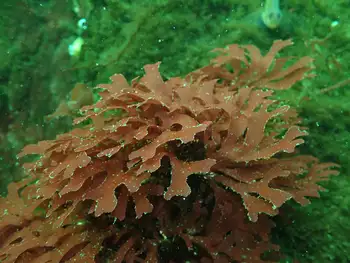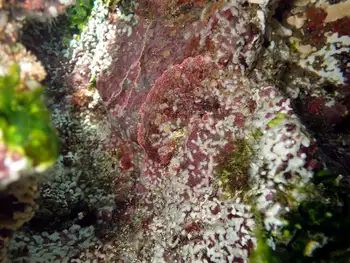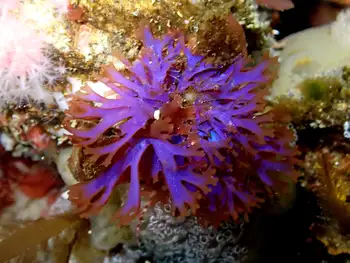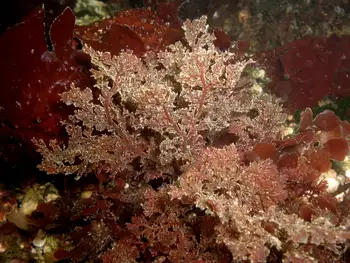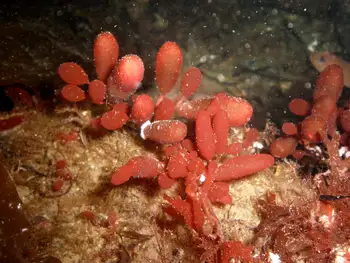Red algae, or Rhodophyta ( roh-DOF-it-ə, ROH-də-FY-tə; from Ancient Greek ῥόδον (rhodon) 'rose', and φυτόν (phyton) 'plant'), are one of the oldest groups of eukaryotic algae. The Rhodophyta also comprises one of the largest phyla of algae, containing over 7,000 currently recognized species with taxonomic revisions ongoing. The majority of species (6,793) are found in the Florideophyceae (class), and mostly consist of multicellular, marine algae, including many notable seaweeds. Red algae are abundant in marine habitats but are relatively rare in freshwaters. Approximately 5% of the red algae occur in freshwater environments with greater concentrations found in warmer areas. Except for two coastal cave dwelling species in the asexual class Cyanidiophyceae, there are no terrestrial species, which may be due to an evolutionary bottleneck where the last common ancestor lost about 25% of its core genes and much of its evolutionary plasticity. The red algae form a distinct group characterized by having eukaryotic cells without flagella and centrioles, chloroplasts that lack external endoplasmic reticulum and contain unstacked (stroma) thylakoids, and use phycobiliproteins as accessory pigments, which give them their red color. Red algae store sugars as floridean starch, which is a type of starch that consists of highly branched amylopectin without amylose, as food reserves outside their plastids. Most red algae are also multicellular, macroscopic, marine, and reproduce sexually. The red algal life history is typically an alternation of generations that may have three generations rather than two.
Rhodophyta. Retrieved May, 08 2021, from en.wikipedia.org/wiki/Red_algae.
Florideophyceae is a class of red algae. They were once thought to be the only algae to bear pit connections, but these have since been found in the filamentous stage of the Bangiaceae. They were also thought only to exhibit apical growth, but there are genera known to grow by intercalary growth. Most, but not all, genera have three phases to the life cycle.
Florideophyceae. Retrieved May, 08 2021, from en.wikipedia.org/wiki/Florideae.
